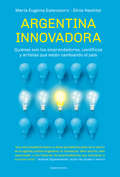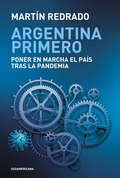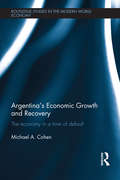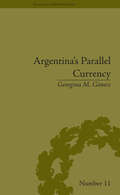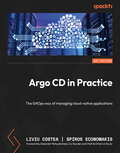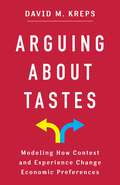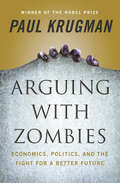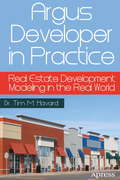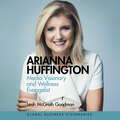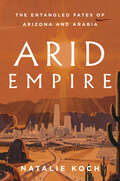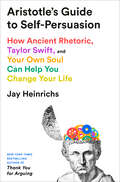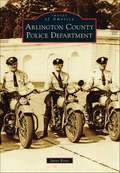- Table View
- List View
Argentina innovadora: Quiénes son los emprendedores, científicos y artistas que están cambiando el país
by Silvia Naishtat María Eugenia EstenssoroCómo hicieron los emprendedores tecnológicos que hace veinte años decidieron realizar el sueño de una nación innovadora y creativa, reconocida por su talento en el resto del mundo. En América Latina hay siete unicornios, y cuatro son argentinos. No se trata de seres mitológicos, sino de empresas tecnológicas valuadas en más de mil millones de dólares. No solo se distinguen por su valor, sino por llevar en su ADN una gran dosis de espíritu rupturista e innovador. Surgieron y se desarrollaron a contramano de la realidad local, y hoy son multinacionales que generan riqueza, trabajo de calidad y crecimiento sostenido. Mercado Libre es la principal plataforma de comercio electrónico de habla hispana y un caso de estudio en la Universidad de Stanford. Despegar es la quinta agencia de turismo del mundo. Globant suministra tecnología a empresas como Disney y Google. OLX está presente en ciento veinte países y es la mayor compañía de venta de clasificados por internet en la India. Pero no son casos excepcionales, y el término "unicornios" se extiende a otras empresas con las mismas características: Gran Data anticipa el comportamiento de los consumidores para las principales compañías telefónicas de los Estados Unidos; Satellogic ya lanzó cinco satélites al espacio que brindan imágenes con una resolución nunca antes alcanzada; y Bioceres posee un gen resistente a la sequía que puede permitir una nueva revolución productiva en el agro. Luego de dos años de viajes y entrevistas, María Eugenia Estenssoro y Silvia Naishtat concluyen que estos son ejemplos descollantes de que la Argentina no es solo un semillero de futbolistas de calidad internacional: con políticas públicas adecuadas, el país puede aspirar también a ser un polo mundial de innovación en áreas tan diversas como la biotecnología, el arte y la comunicación.
Argentina primero: Poner en marcha el país tras la pandemia
by Martín RedradoUn plan para dejar de improvisar en la Argentina post pandemia y evitar las crisis recurrentes que minan la confianza interna y externa, logrando así que se estabilice la economía, se reduzcan la inflación y la pobreza, y se inicie al fin un sendero inclusivo, virtuoso y de crecimiento sostenido. Hace décadas que la Argentina oscila de manera errática entre insertarse en el mundo ingenuamente, tomando deuda y generando recesión, y cerrarse a él neciamente, emitiendo moneda y acelerando la inflación. Uno y otro caso presentan políticas fiscales inconsistentes, crisis recurrentes y desaliento social como constantes. Son los dos polos de un mismo péndulo: el del fracaso nacional. ¿Es posible construir un nuevo camino, virtuoso e inclusivo? Martín Redrado asegura que sí, y aquí demuestra cómo. Porque no se trata solamente de evitar las crisis que minan la confianza interna y externa: se trata de estabilizar nuestra economía, reducir la inflación y la pobreza, y trazar un sendero de crecimiento sostenido. Tras la pandemia, la Argentina debe estar preparada para utilizar instrumentos económicos no convencionales en el corto plazo que empalmen con un plan orientado al consumo, la inversión y las exportaciones a través del tiempo. Este libro es ese plan.
Argentina's Convertibility Plan
by Rafael Di Tella Ingrid VogelDescribes the political and economic development in Argentina from 1989 to 1995, with a focus on the role of the currency board. Culminates in Argentine policy makers (Menem in particular) contemplating how to respond to the tequila crisis in the middle of 1995. Focuses on the tradeoff between a fixed exchange rate to maintain price stability and the required high interest rates that impact financial stability. A rewritten version of an earlier case.
Argentina's Economic Growth and Recovery: The Economy in a Time of Default
by Michael CohenThis book examines the causes of the economic and political crisis in Argentina in 2001 and the process of strong economic recovery. It poses the question of how a country which defaulted on its external loans and was widely criticized by international observers could have succeeded in its growth and development despite this decision in 2002. It examines this process in terms of the impact of neo-liberal policies on the economy and the role of development strategy and the state in recovering from the crisis
Argentina's Economic Reforms of the 1990s in Contemporary and Historical Perspective (Europa Perspectives: Emerging Economies)
by Domingo Cavallo Sonia Cavallo RundeWhy has Argentina suffered so much political and economic instability? How could Argentina, once one of the wealthiest countries in the world, failed to meet its potential over decades? What lessons can we take from Argentina's successes and failures? Argentina’s economy is - irresistibly - fascinating. Argentina's economic history - its crises and its triumphs cannot be explained in purely economic terms. Argentina's economic history can only be explained in the context of conflicts of interest, of politics, war and peace, boom and bust. Argentina's economic history is also intertwined with ideological struggles over the ideal society and the on-going struggle of ideas. The book comprises two distinct components: an economic history of Argentina from the Spanish colonial period to 1990, followed by a narrative by Domingo Cavallo on the last 25 years of reform and counter reform. Domingo Cavallo has been at the centre of Argentina's economic and political debates for 40 years. He was one of the longest serving cabinet members since the return of democracy in 1983. He is uniquely qualified to help the reader make the connection between historical and current events through all these prisms. His daughter, Sonia Cavallo Runde, is an economist specialized on public policy that currently teaches the politics of development policy. The two Cavallos offer academics and students of economics and finance a long form case study. This book also seeks to offer researchers and policymakers around the world with relevant lessons and insights to similar problems from the Argentine experience.
Argentina's Parallel Currency: The Economy of the Poor (Financial History)
by Georgina M GomezAnalyzes the rise and fall of the Red de Trueque (launched in 1995 by a group of environmentalists who exchanged goods and services at their own 'market' using a system of mutual credit) in Argentina. This book identifies rules of governance and sustainability for institutional settings in which state regulation is minimal.
Argentine Paradox: Economic Growth and the Populist Tradition
by Rafael Di Tella Ingrid VogelDescribes the political and economic development in Argentina from 1900 to 1989, with a focus on the role of Peron and populism. A rewritten version of an earlier case.
Argo CD in Practice: The GitOps way of managing cloud-native applications
by Liviu Costea Spiros Economakis Alexander MatyushentsevBuild CD pipelines following GitOps principles like declarative and immutable changes stored in version control, all continuously reconciled by Argo CD, and minimize the failure of deployments.Purchase of the print or Kindle book includes a free eBook in the PDF format.Key FeaturesDiscover how to apply GitOps principles to build real-world CD pipelinesUnderstand Argo CD components and how they work together to reconcile cloud native applicationsLearn to run Argo CD in production with declarative config changes, security, observability, disaster recovery, and moreBook DescriptionGitOps follows the practices of infrastructure as code (IaC), allowing developers to use their day-to-day tools and practices such as source control and pull requests to manage apps. With this book, you'll understand how to apply GitOps bootstrap clusters in a repeatable manner, build CD pipelines for cloud-native apps running on Kubernetes, and minimize the failure of deployments. You'll start by installing Argo CD in a cluster, setting up user access using single sign-on, performing declarative configuration changes, and enabling observability and disaster recovery. Once you have a production-ready setup of Argo CD, you'll explore how CD pipelines can be built using the pull method, how that increases security, and how the reconciliation process occurs when multi-cluster scenarios are involved. Next, you'll go through the common troubleshooting scenarios, from installation to day-to-day operations, and learn how performance can be improved. Later, you'll explore the tools that can be used to parse the YAML you write for deploying apps. You can then check if it is valid for new versions of Kubernetes, verify if it has any security or compliance misconfigurations, and that it follows the best practices for cloud-native apps running on Kubernetes. By the end of this book, you'll be able to build a real-world CD pipeline using Argo CD.What you will learnUnderstand GitOps principles and how they relate to IaCDiscover how Argo CD lays the foundation for reconciling Git state with the cluster stateRun Argo CD in production with an emphasis on reliability and troubleshootingBootstrap Kubernetes clusters with essential utilities following the GitOps approachSet up a CD pipeline and minimize the failure of deploymentsExplore ways to verify and validate the YAML you put together when working with KubernetesUnderstand the democratization of GitOps and how the GitOps engine will enable its further adoptionWho this book is forIf you're a software developer, DevOps engineer, or SRE who is responsible for building CD pipelines for projects running on Kubernetes and wants to advance in your career, this book is for you. Basic knowledge of Kubernetes, Helm, or Kustomize and CD pipelines will help you to get the most out of this book.
Argonauts of the Western Pacific
by Bronislaw MalinowskiBronislaw Malinowski's pathbreaking Argonauts of the Western Pacific is at once a detailed account of exchange in the Melanesian islands and a manifesto of a modernist anthropology. Malinowski argued that the goal of which the ethnographer should never lose sight is 'to grasp the native's point of view, his relation to life, to realise his vision of his world. ' Through vivid evocations of Kula life, including the building and launching of canoes, fishing expeditions and the role of myth and magic amongst the Kula people, Malinowski brilliantly describes an inter-island system of exchange - from gifts from father to son to swapping fish for yams - around which an entire community revolves. A classic of anthropology that did much to establish the primacy of painstaking fieldwork over the earlier anecdotal reports of travel writers, journalists and missionaries, it is a compelling insight into a world now largely lost from view. With a new foreword by Adam Kuper.
Arguing About Tastes: Modeling How Context and Experience Change Economic Preferences (Kenneth J. Arrow Lecture Series)
by David KrepsMainstream economics considers individual preferences to be fixed and unchanging. Although psychologists and other social scientists explore how tastes are formed, influenced, and evolve, it is not considered “proper” in orthodox economics to do so. Arguing About Tastes makes the case that economists should abandon the principle that preferences are fixed and instead incorporate into their work how context and experience shape individual tastes.David M. Kreps argues that the discipline must account for dynamic personal tastes when it comes to understanding social exchange, emphasizing human resource management and on-the-job behavior. He develops formal models that illustrate the power of intrinsic motivation and show why applying extrinsic incentives can be counterproductive. Kreps weighs the advantages and disadvantages of the principle de gustibus non est disputandum: there is no arguing about tastes. He calls for a new era of economics in which preferences are taken into account—and not for granted.Arguing About Tastes concludes with responses by the distinguished economists Alessandra Casella and Joseph E. Stiglitz and a final reply by Kreps.
Arguing with Zombies: Economics, Politics, And The Fight For A Better America
by Paul KrugmanAn accessible, compelling introduction to today’s major policy issues from the New York Times columnist, best-selling author, and Nobel prize–winning economist Paul Krugman. <P><P>There is no better guide than Paul Krugman to basic economics, the ideas that animate much of our public policy. Likewise, there is no stronger foe of zombie economics, the misunderstandings that just won’t die. <P><P>In Arguing with Zombies, Krugman tackles many of these misunderstandings, taking stock of where the United States has come from and where it’s headed in a series of concise, digestible chapters. Drawn mainly from his popular New York Times column, they cover a wide range of issues, organized thematically and framed in the context of a wider debate. Explaining the complexities of health care, housing bubbles, tax reform, Social Security, and so much more with unrivaled clarity and precision, Arguing with Zombies is Krugman at the height of his powers. <P><P>Arguing with Zombies puts Krugman at the front of the debate in the 2020 election year and is an indispensable guide to two decades’ worth of political and economic discourse in the United States and around the globe. With quick, vivid sketches, Krugman turns his readers into intelligent consumers of the daily news and hands them the keys to unlock the concepts behind the greatest economic policy issues of our time. In doing so, he delivers an instant classic that can serve as a reference point for this and future generations. <P><P><b>A New York Times Bestseller</b>
Argumentation Theory: A Pragma-Dialectical Perspective (Argumentation Library #33)
by Frans H. van EemerenThe book offers a compact but comprehensive introductory overview of the crucial components of argumentation theory. In presenting this overview, argumentation is consistently approached from a pragma-dialectical perspective by viewing it pragmatically as a goal-directed communicative activity and dialectically as part of a regulated critical exchange aimed at resolving a difference of opinion. As a result, the book also systematically explains how the constitutive parts of the pragma-dialectical theory of argumentation, which are discussed in a number of separate publications, hang together.The following crucial topics are discussed: (1) argumentation theory as a discipline; (2) the meta-theoretical principles of pragma-dialectics; (3) the model of a critical discussion aimed at resolving a difference of opinion; (4) fallacies as violations of a code of conduct for reasonable argumentative discourse; (5) descriptive research of argumentative reality; (6) analysis as theoretically-motivated reconstruction; (7) strategic manoeuvring aimed at combining achieving effectiveness with maintaining reasonableness; (8) the conventionalization of argumentative practices; (9) prototypical argumentative patterns; (10) pragma-dialectics amidst other approaches.Argumentation Theory: A Pragma-Dialectical Perspective is clearly written and makes argumentation theory understandable to all scholars and advanced students interested in argumentation research.
Argumente für ein Grünes Grundgesetz: Chancen und Risiken einer Verfassungsänderung zum effektiven Klimaschutz (essentials)
by Jochen TheurerDie Erderwärmung schreitet stetig voran. Dennoch setzen die regierenden Politiker die längst erforderlichen Maßnahmen nicht konsequent um. Daran haben auch millionenfache Proteste aus der Mitte der Gesellschaft nichts geändert. Doch ist die Zivilgesellschaft wirklich machtlos? Jochen Theurer erforscht in diesem essential eine interessante neue Handlungsoption für die schnelle Einführung effektiver Klimaschutzmaßnahmen. Charmant, informativ und realistisch.
Argus Developer in Practice: Real Estate Development Modeling in the Real World
by Tim M. HavardThis book is a practical guide to using ArgusDeveloper, the worldOCOs most widely used real estate development feasibilitymodeling software. Using practical examples and many case studies, it takesreaders beyond basic training and provides the in-depth knowledge required toanalyze potential real estate deals and help ensure a profitable development. Argus Developer in Practice fillsan important gap in the market. Argus Developer, and its predecessor CircleDeveloper, has long had a dominant position as the primary real estatedevelopment appraisal tool. It is used all over the world on a variety ofprojects ranging from simple residential projects to huge and complex masterplanned, mixed-use, commercial, residential, and leisure projects. It also shineswhen used to appraise OC refurbsOCOOCotaking an existing building or complex andupgrading it or turning it into something entirely different. Argus Developer in Practice, thefirst book that concentrates on the practical application and use of the program, goes beyond the manual that comes with it by taking you through thedevelopment/project appraisal process step by step. In addition, author TimHavard has over 25 years of experience in carrying out development appraisalsboth in practice and in teaching at the postgraduate level in UK and Australianuniversities. He started using the DOS version of Circle Developer in 1990, then worked for both Circle and Argus training clients on the software in theUK, continental Europe, and the Middle East. Besides showing you how to use theprogram, Havard shows you how to think like a successful real estate developer. Using an extensive array of screenshots, ArgusDeveloper in Practice delves deeply into practical use of theprogram by offering case studies of varying complexity that will help realestate professionals not just analyze development projects but also learn howthe best minds in real estate analyze a projectOCOs potential. You will learn: How to model both simple projects and complex mixed-use and multi-phased investment schemes How to model new uses for existing properties How to think through real estate project problems How to analyze a potential development project in depth By using the program efficiently and making use of itsmore advanced features, you can help ensure a profitable project without thesurprises that accompany most real estate ventures. Argus Developer in Practice therefore providessomething pricelessOCopeace of mind. "
Ariadne Labs: Building Impactful Partnerships
by Ariel D. Stern Sarah MehtaIn September 2018, the executive team at Ariadne Labs (Ariadne), a Boston-based organization dedicated to improving health systems through the discovery and implementation of simple tools, faced a number of strategic decisions. Chief among them, the seven-year-old organization needed to determine how it might establish and shepherd successful partnerships with a wide range of diverse entities-ranging from major international public health organizations like the World Bank to small non-profit implementing organizations.
Arianna Huffington: Media Visionary and Wellness Evangelist
by Leah McGrath GoodmanArianna Huffington is one of the world's most prominent business leaders in media. As co-founder and editor-in-chief of the Huffington Post, she built the first internet newspaper, which eclipsed the traffic of the New York Times and won a Pulitzer Prize. Creating a digital media empire from an investment of just over $1 million, she sold HuffPost to AOL in 2011 for more than $300 million. Today, HuffPost is the flagship publication for global telecommunications giant Verizon. Considered to be one of the most influential women on earth, Huffington went on to establish Thrive Global, a wellness and technology start-up that aims to end the stress and burn out epidemic. This concise but richly detailed biography provides an overview of Huffington's life and career, chronicling her journey from Athens to London, New York, Washington and California, across seven decades. From her earliest days, Huffington faced overwhelming challenges to carve a bold path that brought her fame, power and wealth. This book reveals her personal insights, how her companies tick, and what lies ahead. Smart, insightful and often startling, this book shows readers how Huffington did it, transforming herself from an aspiring author to a serial entrepreneur and, ultimately, the reigning queen of media.
Arianna Huffington: Media Visionary and Wellness Evangelist
by Leah McGrath GoodmanArianna Huffington is one of the world's most prominent business leaders in media. As co-founder and editor-in-chief of The Huffington Post, she built the first internet newspaper, which eclipsed the traffic of The New York Times and won the Pulitzer Prize. Creating a digital media empire from an investment of just over $1 million, she sold HuffPost to AOL in 2011 for more than $300 million.HuffPost went on to become the flagship publication for global telecommunications giant Verizon, before being acquired by BuzzFeed in 2020. Considered to be one of the most influential women on earth, Huffington went on to establish Thrive Global, a wellness and technology start-up that aims to end the stress and burn-out epidemic.This concise, but richly detailed, biography provides an overview of Huffington's life and career, chronicling her journey from Athens to London, New York, Washington and California, across seven decades. From her earliest days, Huffington faced overwhelming challenges to carve a bold path that brought her fame, power and wealth. This book reveals her personal insights, how her companies tick, and what lies ahead. Smart, insightful, and often startling, this book shows readers how Huffington did it, transforming herself from a struggling aspiring author to a serial entrepreneur and, ultimately, reigning queen of media.
Arianna Huffington: Media Visionary and Wellness Evangelist
by Leah McGrath GoodmanArianna Huffington is one of the world's most prominent business leaders in media. As co-founder and editor-in-chief of The Huffington Post, she built the first internet newspaper, which eclipsed the traffic of The New York Times and won the Pulitzer Prize. Creating a digital media empire from an investment of just over $1 million, she sold HuffPost to AOL in 2011 for more than $300 million.HuffPost went on to become the flagship publication for global telecommunications giant Verizon, before being acquired by BuzzFeed in 2020. Considered to be one of the most influential women on earth, Huffington went on to establish Thrive Global, a wellness and technology start-up that aims to end the stress and burn-out epidemic.This concise, but richly detailed, biography provides an overview of Huffington's life and career, chronicling her journey from Athens to London, New York, Washington and California, across seven decades. From her earliest days, Huffington faced overwhelming challenges to carve a bold path that brought her fame, power and wealth. This book reveals her personal insights, how her companies tick, and what lies ahead. Smart, insightful, and often startling, this book shows readers how Huffington did it, transforming herself from a struggling aspiring author to a serial entrepreneur and, ultimately, reigning queen of media.
Arid Empire: The Entangled Fates of Arizona and Arabia
by Natalie KochA revelatory new history of the colonization of the American WestThe iconic deserts of the American southwest could not have been colonized and settled without the help of desert experts from the Middle East. For example: In 1856, a caravan of thirty-three camels arrived in Indianola, Texas, led by a Syrian cameleer the Americans called "Hi Jolly." This "camel corps," the US government hoped, could help the army secure the new southwest swath of the country just wrested from Mexico. Though the dream of the camel corps - and sadly, the camels - died, the idea of drawing on expertise, knowledge, and practices from the desert countries of the Middle East did not.As Natalie Koch demonstrates in this evocative, narrative history, the exchange of colonial technologies between the Arabian Peninsula and United States over the past two centuries - from date palm farming and desert agriculture to the utopian sci-fi dreams of Biosphere 2 and Frank Herbert's Dune - bound the two regions together, solidifying the colonization of the US West and, eventually, the reach of American power into the Middle East. Koch teaches us to see deserts anew, not as mythic sites of romance or empty wastelands but as an "arid empire," a crucial political space where imperial dreams coalesce.
Aristotle's Critique of Political Economy: With a Contemporary Application (Routledge Studies in the History of Economics)
by Robert L. GallagherThis book presents a positive account of Aristotle’s theory of political economy, arguing that it contains elements that may help us better understand and resolve contemporary social and economic problems. The book considers how Aristotle’s work has been utilized by scholars including Marx, Polanyi, Rawls, Nussbaum and Sen to develop solutions to the problem of injustice. It then goes on to present a new Social Welfare Function (SWF) as an application of Aristotle’s theory. In exploring how Aristotle’s theories can be applied to contemporary social welfare analysis, the book offers a study that will be of relevance to scholars of the history of economic thought, political theory and the philosophy of economics.
Aristotle's Guide to Self-Persuasion: How Ancient Rhetoric, Taylor Swift, and Your Own Soul Can Help You Change Your Life
by Jay HeinrichsShow yourself who's in charge using the original art of persuasion, backed by contemporary pop culture examples that make transforming your habits and achieving goals easy, even fun—from the New York Times bestselling author of Thank You for ArguingRhetoric once sat at the center of elite education. Alexander the Great, Shakespeare, and Martin Luther King, Jr., used it to build empires, write deathless literature, and inspire democracies. Now it will help you to take leadership over yourself; not through pop psychology or empty inspiration, but with persuasive tools that have been tested for more than three thousand years. In Aristotle's Guide to Self-Persuasion, Heinrichs helps readers persuade their most difficult audiences—themselves—by using techniques invented by the likes of Aristotle and Cicero and deployed by our culture&’s most persuasive characters. With their help, rhetoric can convert the most negative situations into positive ones. Heinrichs brings in examples from history and pop culture—Winston Churchill, Iron Man, Dolly Parton, and the woman who serendipitously invented the chocolate chip cookie—to illustrate the concepts. But the core of the book tests the tools of self-persuasion and asks: Can the same techniques that seduce lovers, sell diet books, and overturn governments help us achieve our most desired goals?Filled with entertaining and scientific studies that showcase the power of what language can do for you, Aristotle's Guide to Self-Persuasion will teach you how to be the most successful person you can be, just by talking to yourself.
Arlan Hamilton and Backstage Capital
by Laura Huang Sarah MehtaFrustrated by an inability to convince existing venture capital firms to invest in companies led by women, people of color, and LGBT founders, Arlan Hamilton started her own firm, Backstage Capital, in 2015. Hamilton understood the untapped potential of companies run by underrepresented founders, a group historically excluded from venture capital funding, and was eager to demonstrate the significant returns on investment in such companies. This case explores Hamilton's nontraditional VC background, and her mission to fund startups where at least one founder of the company identifies as a woman, person of color, or LGBT. Now, three years after its founding, Hamilton is considering launching both an accelerator and a fund that will invest exclusively in Black women.
Arley Merchandise Corp.
by William E. FruhanInvolves the initial public offering of a firm's stock. The offering includes a money-back guarantee to investors from the issuing firm which comes in the form of a "put" option. Option valuation is thus an important issue in this case.
Arlington County Police Department (Images of America)
by Janet RoweArlington County was carved from a section of the District of Columbia and formally named by the Virginia General Assembly in 1920. The rural farming community across the Potomac River was home to vacationing District of Columbia elite as well as rumrunners and brothels. Law enforcement fell to the commonwealth attorneys, sheriffs, special officers, and citizen leagues. The county board adopted a proposal, and the Arlington County Police Department was founded on February 1, 1940. This photographic history covers law enforcement from the early days of rumrunners to the present day, showing the changes in uniforms, equipment, methods of policing, and the department's response to the 9/11 attack on the Pentagon. Officers are shown training for the line of duty, investigating crimes, serving in specialized units, and promoting public safety. The officers who made the ultimate sacrifice in service to the community are honored here.
